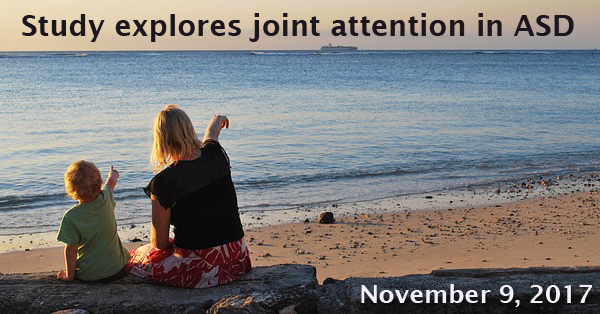Check out other stories from the Latest News
Study Explores Brain Activity Related to Joint Attention
By Chelsea E. Toledo, M.A. on November 9, 2017

Background: Imagine a man and a woman having a conversation at a coffee shop while waiting for their orders. While they are making eye contact, the woman’s gaze shifts to the counter, where the man’s coffee has now appeared. The man then turns his attention to the drink, as well. This process is called joint attention – the shared focus on an object, cued by a verbal or non-verbal signal from one individual to another. Part of the communicative differences observed in Autism Spectrum Disorder (ASD) arises due to the lack of shared attention.
What’s new: On October 19, 2017, the journal Scientific Reports published a study that assessed the underlying brain activity of eleven 6 to 9 year old boys with high-functioning ASD in situations that called for joint attention. Over a period of six months, the researchers held weekly treatment sessions: the first half of the session was devoted to play-based activity, and the second half to administration of a tablet-based therapy.
To assess joint attention, the researchers recorded the children’s response to one therapist looking at the child and then gesturing to another therapist (responding joint attention), to having a story read by one therapist while another therapist acted the story out (initiating joint attention), and to other scenarios eliciting joint attention. In the second half of the session, they administered a tablet-based therapy game (called GOLIAH, based in the MICHELANGO framework that uses wearable technology to track brainwaves and eye movements).
The researchers collected data on brain activity and eye movements at the beginning and the end of the six-month study. They found that:
- Initiating and responding joint attention have both specialized and overlapping brain activity patterns
- There were changes in brain activity after treatment
- The trends in brain activity following treatment corresponded with modified eye movements
Why it’s important: This pilot study suggests that an approach integrating neuronal and eye-tracking data can provide a clearer picture of the brain’s activity during joint attention. Future studies with a larger sample of participants could shed light on the underlying reasons that joint attention differs in people in ASD – and could lay the groundwork for therapies targeting this skill.
Help me understand :
| Source(s) : |
| Tweet |

